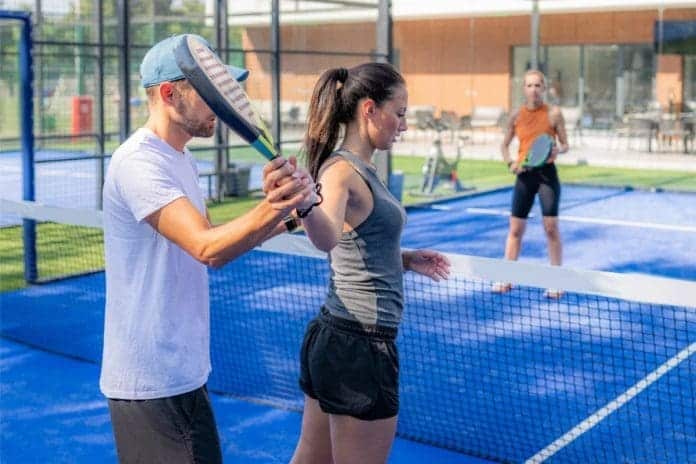Traditionally, pickleball serves had specific restrictions: the ball needed to be struck below the waist and with precise timing. The drop serve, however, allows players to drop the ball from their non-dominant hand, let it bounce once, and then hit it with their paddle. This adjustment removes previous limitations and introduces strategy to the game.
Mastering the Drop Serve: Key Techniques
- Leverage the Bounce: The drop serve starts with dropping the ball from the non-dominant hand. The ball must bounce before being struck, offering players a chance to adjust their stance and prepare for a solid hit. This bounce gives players extra time to set up their shots.
- Adhere to Serving Rules: The ball must be dropped without added force or spin. Although it can bounce as high as needed, spinning or tossing the ball is not allowed. Ensuring that the ball bounces on the court before the serve is crucial for compliance.
- Foot Positioning Matters: Feet must remain behind the baseline during the serve. While the ball can be dropped from anywhere, staying behind the baseline ensures that the serve is legal.
- Optimize Body Alignment: Positioning oneself sideways to the net improves alignment and rotation. For a right-handed server, angling slightly towards the left, and vice versa for left-handed servers enhances accuracy and power.
- Strike at the Apex: Waiting for the ball to reach its highest point before hitting it can lead to more controlled and effective serves. Hitting too soon can result in errors and reduced accuracy.
- Use Proper Technique: Bending the knees and following through with a smooth swing enhances the serve’s power and consistency. The motion should be fluid, with a focus on a complete follow-through over the shoulder.
Mechanics of the Drop Serve
To truly excel with the drop serve, it’s beneficial to understand the mechanics behind it. Studying the techniques of drop serve reveals the importance of the kinetic chain. This sequence includes the following:
- Legs: The foundation of the serve begins with strong leg action.
- Hips: Power is transferred upward through the hips.
- Shoulders: Shoulders add additional force to the serve.
- Arms: Extended arms contribute to direction and speed.
- Wrist: A relaxed wrist is vital for controlling spin and trajectory.
- Paddle: The paddle completes the contact, channeling the accumulated energy into the ball.
Perfecting the drop serve involves more than just learning the rules; it requires mastering these elements. Emphasizing smoothness over brute strength can turn the serve into a powerful weapon. Practice, combined with a focus on the kinetic chain, enhances power and precision.
Adapting to the New Era of Pickleball
As the game evolves, the drop serve is becoming a cornerstone of the pickleball strategy. Embracing this technique not only aligns with rule changes but also offers a chance to refine and elevate one’s game. Mastering the drop serve can provide a competitive edge and make a significant impact on performance. By understanding and implementing these key aspects, players can transform their approach and excel in the new era of pickleball.

News in Brief: Mastering the Drop Serve
The drop serve, introduced by USA Pickleball in 2021, is transforming the game by offering players a new serving technique. Unlike traditional serves, the drop serve allows players to drop the ball from their non-dominant hand, let it bounce, and then hit it with their paddle. This change removes previous restrictions, adding strategic depth to serving.
Key techniques include leveraging the bounce for better preparation, maintaining proper foot positioning behind the baseline, aligning the body for accuracy, and striking the ball at its apex for control. Mastering the drop serve involves understanding the kinetic chain from legs to paddle, focusing on smoothness rather than strength. Embracing this technique can enhance performance and adapt to pickleball’s changing landscape.

